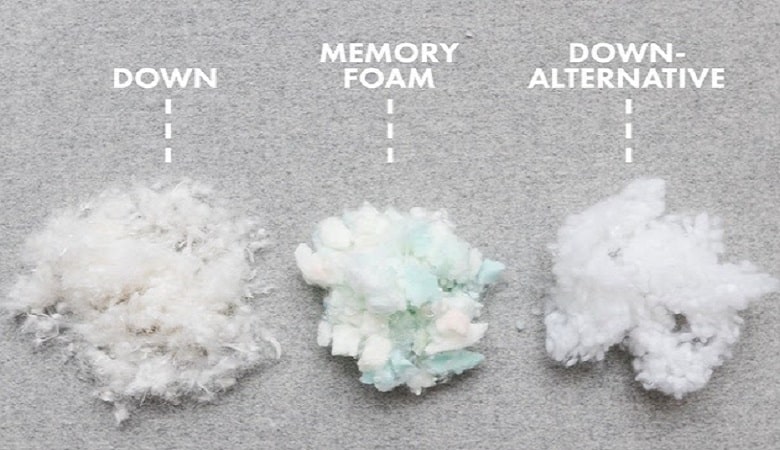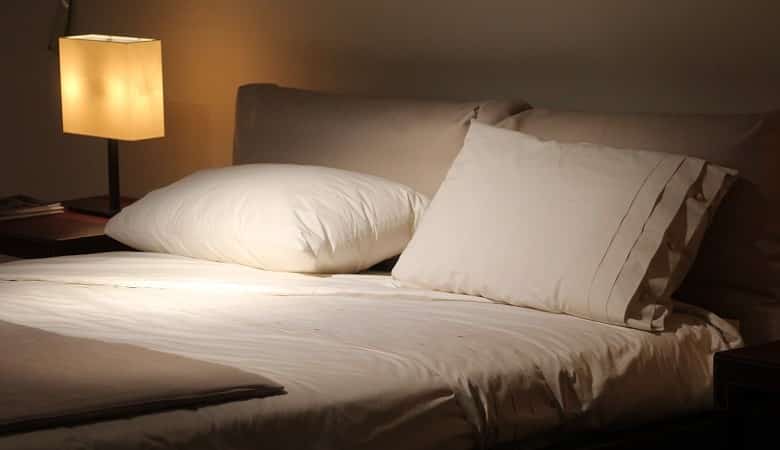Pillows are an added luxury in getting a good night’s rest. We could sleep without them, but with them, there’s the feeling of comfort, relaxation, and they give a level of support for our neck, head, and spine.
We use them throughout the night, so it’s no wonder they flatten, and we’re tempted to replace them every year with new ones.
So, why do pillows go flat? The most common reason why your pillow flattens is because your head is compressed to the loose material inside the pillow for a long period of time. This causes the material to lose its fluffiness and it ultimately becomes flat. The flatness of a pillow could also be due to moisture.
Pillows do have lifespans. While we may not need to necessarily replace a pillow every year, we should not expect to have to replace one before two years.
Feather and down pillows could last between five and ten years, and polyester pillows should last at least two years.
The normal lifespan of a pillow is two to 4 years. Let’s look at some ways to maintain our pillows to help keep them fluffy throughout the course of their lifespan.
If you are interested in checking out the best rated memory foam pillows currently availableon the market, you can do so on Amazon here.
Pillow Fillers

Synthetic
The most common filler for pillows are synthetic materials derived from polymer fibers, such as polyester and memory foam. Memory foam pillows can be either solid-filled or shredded.
Solid fillers gives a supportive feel as your head sinks into the pillow, but the fill cannot move.
The shredded memory foam pillows also give a supportive feel, but there’s a fluffier feel, since the fill is not solid. Synthetic fillers are inexpensive and can keep their form longer.
Memory foam is our favorite bedding material. If you want to learn more about the pros and cons of memory foam pillows, read this post next.
Natural
Natural fillers have been used for a longer period of time. The most common are feathers, down, wool, latex, cotton, and buckwheat.
Down is the softer, more fluffy filler, and is more expensive due to its scarcity. It’s plucked from live geese. Latex pillows can also be solid or shredded filled.
The shredded fill has a squishy feel like memory foam, but it bounces back much quicker.
How to Maintain Your Pillow

Cleaning Your Pillow
Over a period of time, pillows (bedding pillows) can become unsanitary, and can suffer from discoloration. The discoloration is due to body oils that makes its way to the materials on the inside of the pillow.
Also, dust mites can build up. Dust mites are inevitable on any bedding, as they live off of skin dander. Waste produced from dust mites can ultimately double the weight of a pillow over a course of 8 to 10 years.
To remedy this, pillows can be dry-cleaned or laundered every three weeks. Bleach will sanitize the pillow and kill the dust mites. But, if the pillow is not completely dry on the inside, as it does act a sponge when taking in water, mildew will form.
A pillow protector provides an added layer of protection from discoloration and dust mites and will help keep the pillow protected for a longer period of time.
Keeping Your Pillow From Going Flat

1) Tumble-drying a dry pillow for fifteen minutes every week is highly recommended for freshening a pillow and keeping it fluffy. This also helps to kill dust mites.
To produce even better results, wrap a tennis ball in a sock and throw it in the dryer with the pillow. The pillow will come out looking all stuffed and fluffy. It will be perfect for a good night’s sleep.
2) Fluff the pillows nightly before going to bed. You can hold the pillow by the ends and squeeze and stretch it continuously three to four times before going to bed. This keeps the pillows fluffy and prevents them from compressing.
3) You can also hit the pillows on both sides with your fists. Then whack it on the bed to bring it back to shape and even it out.
4) Set the pillows out in the sun for a few hours once a week. If pillows have lost their fluffiness due to moisture, sunlight will help fix that issue. After 3 to 4 hours in the sun, the fluffiness will return.

When To Replace Your Pillow
Pillows do have lifespans, and should eventually be replaced. Regardless of how much maintenance is done, it’s always a good idea to replace a pillow for sanitary reasons. There are sure signs that it may be time to replace your pillow:
- When your pillow becomes lumpy and saggy. There’s a way to determine if it’s still supportive, however. Fold the pillow in half and place a book on top of it. If it springs back to its original shape, there is still life. If it stays folded in half, it’s time to go.
- When you see prominent stains from sweat or moisture.
- When your back or neck starts to ache when you wake up.
- Memory foam pillows should be replaced when they’re crumbly or have lost their original form.
In general, all pillows will eventually lose their fluff, but if it’s important to you to keep the pillow for as long as possible, following the above maintenance procedures will help with its upkeep.
For best results, maintenance should be implemented on a routine basis.
If you are interested in checking out the best rated memory foam pillows currently availableon the market, you can do so on Amazon here.


